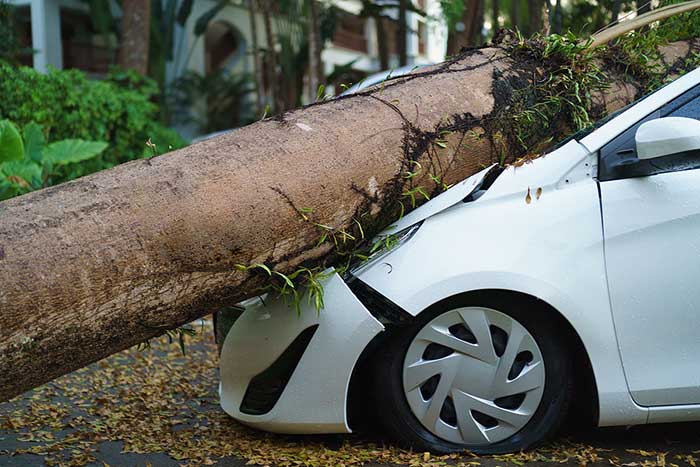Disaster events often take place over mere minutes or sometimes hours, and the aftermath can be traumatic and crippling to ill-prepared property owners. First responders and emergency crews find their way to the scene and begin any necessary rescue efforts, addressing the most urgent needs first, and your voice can often be lost in the crowd. Understanding the who, what, when, and why behind communicating during a disaster can be a game-changer for your property and person.

Your first communication must always be to address the medical needs. If a large-scale disaster has hit your community, first responders may be close and available, but calling 911 for emergency assistance is the first step in life-threatening situations. Make sure that you have a disaster response plan in place in case of disasters. Once emergency crews have addressed immediate medical and safety concerns, your next call is to your insurance company to begin the claims process, which can take weeks or months to complete.
Your insurance company will give you the next steps, and contacting a trusted restoration group in the area brings the next layer of attention to your property needs. Reputable restoration companies are well-versed in working with disasters responses, with insurance, and can bring immediate relief to problems that could cause further property damage.
“A quality restoration company with the resources to respond will answer your call with action,” says a representative of BluSky Restoration Contractors, a national leader in disaster response. “We secure the location to ensure you are safe and prevent further damage to your property. The claims process takes time, but ensuring your property has been assessed and stabilized is your right.”
Establishing the safety of your premises is vital to determining the next steps. If you are unable to remain in your home, reach out to the nearest friend or family member who has not been affected by the disaster. Hotel accommodations may be your best bet, and in the case of large community disasters, public accommodations and relief may be available.
Once you’ve secured shelter for the immediate future, further follow-up with your insurance and restoration contacts is important. Your priority is always safety, first of the people in your family and then the property.
Large-scale disasters may affect mass communication and transportation, and it’s important to have a plan in place to address potential outages.
Phones
In a large-scale disaster, cellular towers might be knocked down or otherwise inoperable. This can lead to a lack of service or slower networks. Seek help from a first responder or another individual with a working phone. In some instances, outages will be limited to specific cellular providers.
Power
A greater challenge might be your personal phone power. With power outages come drained batteries and a lack of heating, cooling, and other basic services. In areas that experience regular natural disasters such as hurricanes, tornadoes, or extreme winter weather, having an appropriate power generator may come in handy. It’s important to use any power supplies for communication and basic survival purposes.
Internet
While the internet is not the most drastic loss, it is an alternative way to communicate with the outside world, seek help, and make arrangements for services. If a laptop computer or other internet-linked device is part of your emergency kit, it’s important to prioritize its use in the midst of a natural disaster. Remember, many phones can act as a hotspot in the event internet is non-functional but cellular devices work. Establish a communication plan with alternative communication forms to ensure you have as many venues to seek resources and make arrangements as possible
Radio Networks
Every community has its network of radio operators using radio waves to communicate. Identify radio users in your area in the event that all other forms of communication fail.
If a local disaster has not taken out the power completely, consider the following as you plan your communication:
- Often, leading social media sites, like Facebook, let you alert people that you’re personally safe from large disasters. This can clear communication channels as loved ones know that you are safe, lowering the demand on phone towers and preserving your battery for necessary calls.
- Insurance companies will be slammed if there are multiple claims taking place but it’s important to start the process. Often, they may even bring in extra people to call centers to help with high volume. They may not be able to help you immediately but can explain the process and begin the paperwork.
- Find a spokesperson. If you don’t have time or phone charge or emotional energy to communicate with all your friends and family, delegate this task to others. Ask them to spread the word about your condition so people don’t worry. This may not answer a lot of questions about your status, but you can offer more personal details once the initial emergencies are resolved.
The best response in a disaster is a planned response, and your plan should include detailed communication steps and alternatives. Your priority in a disaster is, first and foremost, safety. In the moments following a disaster, relying on a well-rehearsed plan of communication will save your property and possibly your life.
